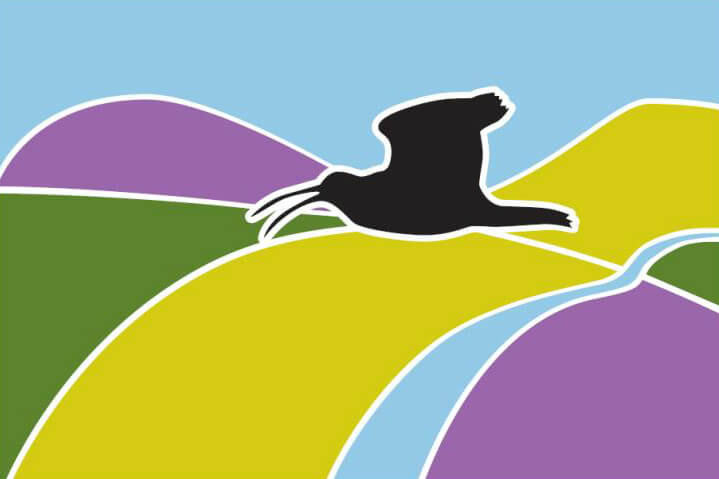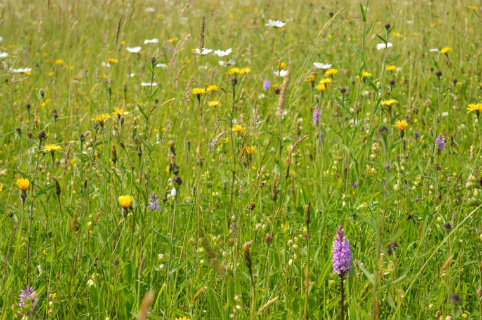This is an archived website, available until June 2027. We hope it will inspire people to continue to care for and protect the South West Peak area and other landscapes. Although the South West Peak Landscape Partnership ended in June 2022, the area is within the Peak District National Park. Enquiries can be made to customer.service@peakdistrict.gov.uk
The 5-year South West Peak Landscape Partnership, 2017-2022, was funded by the National Lottery Heritage Fund.
South West Peak Supports “Sheep to Craft”
28 January 2021
The following article was written by Alison Bowry who is the Programme Manager, Creative Arts, Health and Wellbeing at HPCA. This programme is part of the Engaging Communities project and is supported by the National Lottery Heritage Fund.
High Peak Community Arts is a small, vibrant charity, which celebrated its 40th anniversary last year, and has run arts and health programmes for 28 years.
Since 2014, High Peak Community Arts has provided a variety of ‘Creative Wellbeing’ projects in partnership with Good News Family Care, who have a farm in the Goyt Valley and a Family centre in Buxton. The participants in the projects are homeless women, including those escaping domestic violence; women in recovery from drug and alcohol dependency (living at the farm and family centre) and other vulnerable women in the community. Participating in collective arts projects has been wonderful in building confidence and self-esteem, and improving well-being, through learning new skills, having fun, relaxing, working together, and being creative.
When the farm acquired a small flock of Lleyn Sheep, it seemed ideal to create a project to utilise their fleece. So we planned a 2 yr programme to teach the women a wide range of traditional skills to transform the fleece, and use it in a variety of craft activities. So few of us understand the processes of how the wool gets from keeping a sheep warm, to keeping us warm in our woolly scarf or jumper, this seemed an ideal opportunity. We were thrilled to get funding from the South West Peak Landscape Partnership and from The Laura Ashley Foundation to do this.
In the project, artist Carol Wilson has worked with with 48 women / girls who were resident with GNFC or attended the project from the community; 14 GNFC staff and volunteers and 2 High Peak Community Arts volunteers in a series of 52 workshops.
As we worked, a ‘How To’ Journal was created, for the women to refer to in the future, so that GNFC will be able to continue using the fleece after our project finished.
As always, through learning skills, being creative, being together, the women were able to relax, build friendships, and improve confidence and well-being.
‘Really loved that all these activities, you could do them alone, but it was so different to do it all together – creates an opening for communication, made a way to be part of a group. As someone coming in, that’s been special. Felt lovely to be with a group of women, too.’
Once the sheep had been sheared, the first workshops were in sorting and washing the fleece. Fleece of differing quality is suited to certain uses – only the best will be good for spinning into yarn, for example.
The sorting was done in the barn, or as in this photo, on a cold day, on the kitchen floor…and the washing could be done outdoors at the farm.
Once this was done, we learnt how to dye the fleece, and card it into batts.
In Year One we used synthetic dyes, and in the second year, learnt to use natural dyes including woad, onion skins and daffodils, with the aim of GNFC being able to use its own plants for this in the future.
Once the wool was dyed, the next skill to learn was carding.
Carding can be done with hand carders, or a drum machine, so the women were able to have a go at both – and transform the fleece into ‘batts’. For this project, we bought all the necessary equipment for GNFC to keep and use in the future.
‘I enjoyed the drum carding, and it all coming out, ready to use. Enjoyed it all from the beginning. I loved the felting, doing the picture, and the ‘stabbing’ with the needles – very therapeutic! - and seeing the end product. I learnt a lot from it, when you look at a sheep you don’t think of all it takes to get the wool.’
Now, after sorting, washing, dyeing and carding, the wool was ready to use for some wet felting and needle felting activities. In Year One, the women made individual wet felted pieces, with a little needle felting to embellish them. And in Year Two, we moved on to make a large scale collective felted picture of Fernilee Reservoir, to display at the farm or family centre.
The women also learnt to make small 2D needle felted objects, like flower brooches; and then moved onto 3D animals – starting with owls, then robins and sheep.
‘Learning something I’ve never done before! Felting – I love it!’
‘I have enjoyed learning new skills; liked needle felting’
One of the project aims was to explore income generation from the fleece. After discussion, it was decided to try making needle felting kits to sell. We chose robins and sheep – and then there were workshops with production lines to make up the kits, taking photos of the process for the instructions. We came up with a brand name – Good Ewes – and a logo, and discussed packaging – everyone clear that we wanted to avoid plastic. So kits were made up, and also a few bags of colour themed carded wool to pilot at a couple of craft fairs, and at GNFC’s annual Thanksgiving event.
The ability to maintain this for income generation will depend on GNFC’s ability to provide staffing resources towards it – it is not easy to attend weekend craft fairs, or run online shops. Local shops like ‘Wiseheart and Wild’ in New Mills will take a few kits.
The next skill to learn, was spinning the carded wool into yarn. In year one, we held workshops on drop spindle spinning – quite a tricky skill! The women were pleased with the yarn they produced, also learning to ply the wool with the spindle, and make it into skeins with a niddy noddy.
‘I liked the atmosphere and being with the other women’
‘It's challenging but fun to learn something new’
‘My favourite was the felting, doing the finished product – from the wool, dying, carding, and then using it to make the end product – knowing the whole process. Spinning, I didn’t enjoy but I appreciate how long it used to take to make a ball of wool before machinery was invented’.
In Year Two, one woman learnt how to use the spinning wheel, and really enjoyed it, to make small quantities of yarn.
As there was not a large enough quantity of wool to send to a mill to be spun, the first batch was spun by hand at Blaize farm, into a lovely chunky yarn – and it was very exciting to get it back, both to use in the workshops, and to prepare some for sale. We dyed some with woad, and left some ‘natural’ for sale at ‘Wiseheart and Wild’; and used natural dyes to dye some other wool for use in the project.
In Year Two, we also moved onto using yarn for weaving – using a peg loom to make a lovely collective wall hanging , pin looms to make small squares for individual coasters, or to sew together as a cushion cover, and the rigid heddle loom for larger woven pieces.
‘Liked tea, coffee and laughter. Relaxed concentration on tasks’.
We held a Winter Celebration in December 2019, with a display of all the work – by which time was pretty impressive!
The final skills learnt in early 2020 (the project was extended due to the artist breaking her leg in May 2019, therefore also necessitating a ‘break’ in proceedings) were knitting, crochet and making pom poms. Some women learnt to knit with needles, and others on a knitting loom – and made scarves, snoods, hats and soft toys. We had just finished the workshops when the Covid 19 lockdown began. We still need to take this year’s fleece to the mill in Ashbourne, when conditions allow. This will provide yarn to sell and to use for further craft activity.
‘The group was good for residents at GNFC but also for people in the community who could visit, and keep and build connections and gain support for their safety and wellbeing’
‘Very relaxed atmosphere which helps socialising. Felt a lot better and positive after the session’.
‘I liked the community feel of everything. Felting – I looked up, and realised I had been in a world of my own for half an hour - to be in my own world and yet surrounded by people, it was lovely. I looked at the clock and I didn’t want it to end. To be engrossed and have people around was relaxing and therapeutic’.
All in all, we feel this was a successful and enjoyable project.




